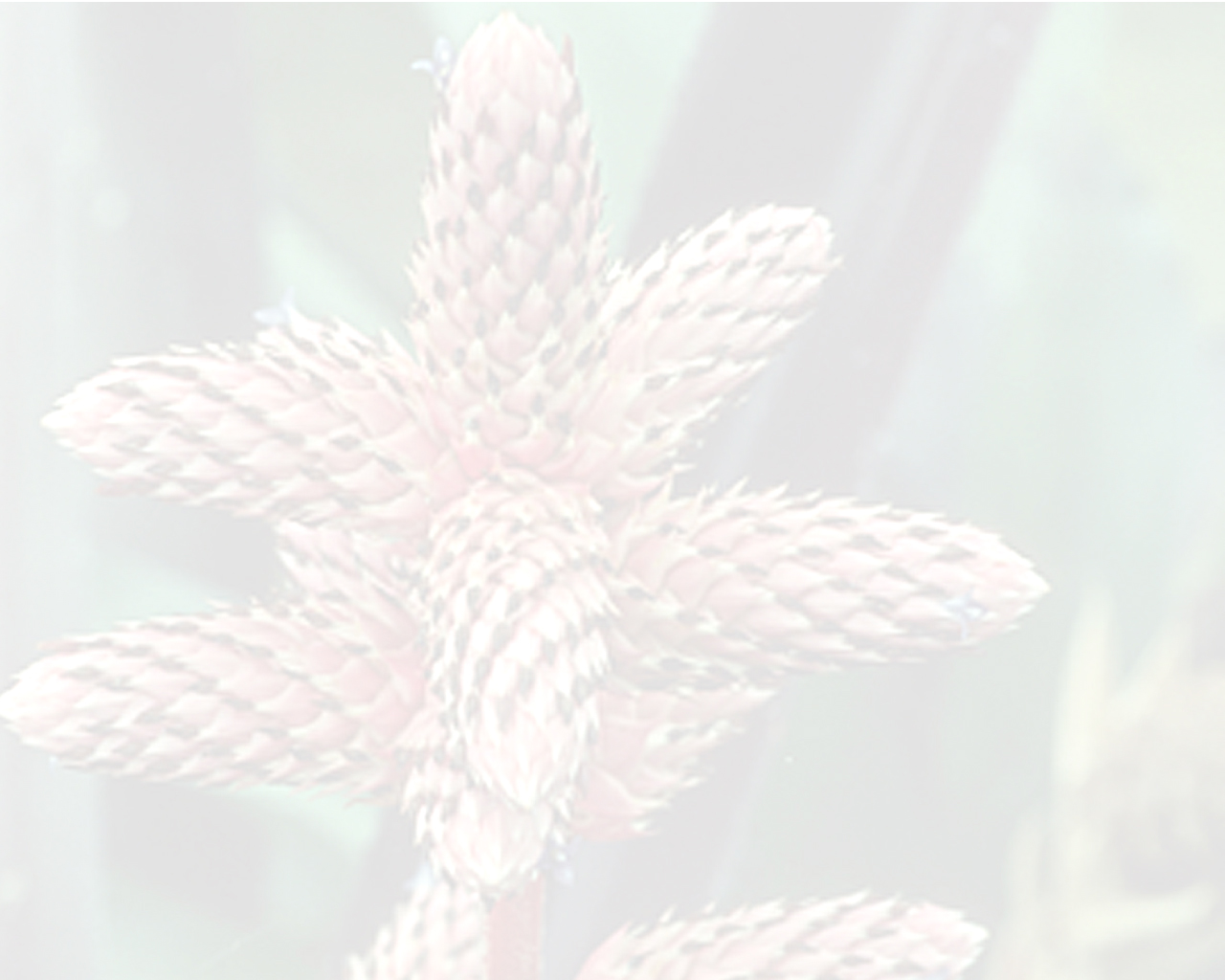


; 0 epiphytic, terrestrial and lithophytic, stem-less herb, forming dense clumps. leaves numerous, rosulate, ligulate, minutely appressed lepidote on both sides, to 1 m long and 5–7 cm wide; apex acuminate to broadly obtuse or rounded and apiculate; blade margins armed with dark spines to 1.5 mm long, becoming smaller closer to the apex; sheath slightly wider than the blades. inflorescence: peduncle erect, stout, 4 - 6 mm thick, covered with lanate or floccose creamy-white indumentum; peduncle bracts erect, imbricate, lanceolate, attenuate to acuminate, with a dark pungent tip; the margins weakly armed or entire, white lanate or floccose; fertile part ovoid to ellipsoid; exceeding or shorter than the leaves, 14 - 28 cm long, somewhat congested, especially toward the apex, white lanate or floccose throughout; the axis straight, 2–5 mm thick; primary bracts ovate to lanceolate, attenuate to acuminate, pungent, the lower exceeding the spikes; spikes ovoid to ellipsoid, sessile or stalked, densely 8–20 flowered, 2.5–5 cm long, smaller toward apex; floral bracts broadly ovate, short acuminate into a dark mucro for about a third of the entire bract length, 12–17 mm long, equaling or exceeding the sepals, striate. flowers: sepals strongly asymmetnc mucronate, 57 mm long; petals clavate, broadening at about the middle, exceeding the sepals by 5–6 mm. pistil: ovary subglobose, 4–5 mm long, enlarged in fruit; ovules fusiform or clavate, borne at the top of the locule, 0.5 mm long. fruits: seeds 1.5 mm long, purplish, oblong, apex rounded and mucronulate.Edited from : Harvard Pap. Bot.. (protologue) .